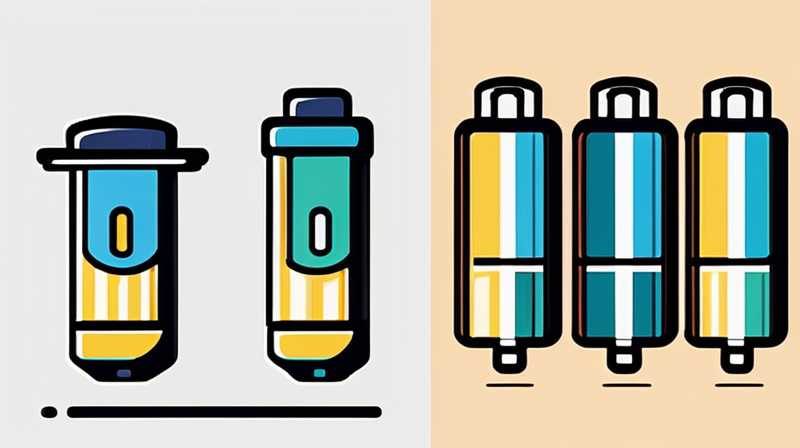
To maintain and extend the lifespan of batteries in solar lights, follow these key guidelines: 1. Regular Maintenance, ensuring cleanliness and function; 2. Optimal Storage, positioning in a suitable environment; 3. Proper Charging, allowing full sunlight access; 4. Battery Replacement, recognizing when to make changes. Regular maintenance includes cleaning solar panels to enhance efficiency and checking connections for corrosion. This elaborates on ensuring every component operates seamlessly, ultimately sustaining performance and longevity.
1. REGULAR MAINTENANCE
Maintaining solar lights is pivotal for enhancing their effectiveness. One must frequently inspect the solar panels to ensure they are free from dirt, dust, and debris. Accumulation can significantly diminish the ability of the panels to absorb sunlight, leading to insufficient charging of the battery. By using a soft cloth and a mild cleaner, individuals can prevent long-term damage to the solar panel’s surface while enhancing light production efficiency.
In addition to cleaning the surface of the panels, evaluating the entire lighting system for signs of wear and tear is equally necessary. Connectors and wiring can corrode or become loose over time, which may hinder performance considerably. Tightening loose connections or replacing corroded wires can dramatically increase the reliability of solar lighting systems, ensuring that the energy flow remains uninterrupted during operation.
2. OPTIMAL STORAGE
The environment in which solar lights are stored plays a substantial role in their longevity. Battery life can drastically decrease if the lights are stored in areas subject to extreme temperatures, whether excessively hot or cold. Ideally, to preserve the integrity of solar batteries, one should store them in a cool, dry place that remains ventilated.
Furthermore, it is advisable to remove batteries if the lights will not be used for extended periods. Storing them in a separate, climate-controlled environment minimizes the risk of over-discharge or corrosion. During colder months, opting for indoor storage can prevent the effects of frost and condensation, both of which can degrade battery performance over time.
3. PROPER CHARGING
Ensuring that solar lights receive adequate sunlight is essential for proper charging. Sunlight exposure directly impacts the performance of solar batteries; thus, choosing a location where the lights can benefit from unobstructed sunlight is crucial. This is particularly important since every solar light’s unique design will dictate how much light absorption they can achieve.
Additionally, one should evaluate the angle at which solar lights are positioned. Angling them toward the sun rather than placing them flat can increase sunlight exposure significantly. Over time, observing the movement of the sun to optimize the positions of solar lights can yield noticeable improvements in battery recharging and operational consistency.
4. BATTERY REPLACEMENT
Eventually, the need for battery replacement will arise, as solar lights typically use rechargeable batteries that lose efficiency over time. Understanding when to replace batteries is essential for continuous operation. Signs that a battery needs replacement typically include dimming lights or inconsistent illumination patterns.
When opting for battery replacement, individuals must consider the type of battery being used. Li-ion (lithium-ion) batteries are commonly used in solar lights and are known for their longevity, while NiMH (nickel-metal hydride) batteries provide another efficient option. It is crucial to select a battery compatible with solar lighting systems to avoid complications during installation or operation.
FAQs
HOW LONG DO SOLAR LIGHT BATTERIES LAST?
Solar light batteries generally last anywhere from 1 to 3 years, depending on several factors such as usage, environmental conditions, and the quality of the batteries themselves. Higher-quality batteries typically provide longer service life. Frequent maintenance can also influence battery longevity, such as cleaning the solar panels and ensuring proper exposure to sunlight. The age of the battery significantly affects its performance, and it is advisable to monitor the indicators of reduced efficiency to ascertain when a replacement is necessary.
WHAT TYPE OF BATTERY IS BEST FOR SOLAR LIGHTS?
The best types of batteries for solar lights include lithium-ion (Li-ion) and nickel-metal hydride (NiMH) batteries. Li-ion batteries are preferred for many modern solar lights, as they offer higher energy density and better efficiency compared to other types. They also have the advantage of long service life and charge retention. However, those seeking to replace batteries should ensure compatibility with their specific lighting system. Researching which type can provide optimal performance while offering good value in terms of expenditure enhances the effectiveness of solar lighting systems.
CAN SOLAR LIGHTS OVERCHARGE THE BATTERIES?
Yes, solar lights can overcharge batteries if they are designed without adequate charge control measures. However, quality solar lighting systems will have built-in mechanisms to prevent overcharging, such as charge controllers that regulate the flow of energy to the battery. Proper management of the charging cycle is essential to prevent damage to the battery, which can result from prolonged overcharge. To ensure the system does not overcharge, opting for units with proven protection mechanisms is advisable when investing in solar lights.
In light of the above considerations, safeguarding the lifespan and performance of batteries in solar lights is essential for sustainable operation. Through diligent routine inspections, which include cleaning panels and assessing components for damage, individuals can significantly enhance efficiency. Furthermore, positioning lights for optimal sunlight exposure proves vital for effective charging and energy retention, ensuring that the batteries function optimally. When batteries show signs of wear, it is equally important to choose appropriate replacements carefully and store solar lights in conditions conducive to long-term performance. The combined implementation of these practices will ensure that solar lighting systems continue to operate at their peak performance, transforming outdoor spaces effectively while minimizing maintenance costs over time. Consistent vigilance and awareness toward battery care are paramount in harnessing renewable energy effectively, reflecting a commitment to sustainability and energy conservation.
Original article by NenPower, If reposted, please credit the source: https://nenpower.com/blog/how-to-preserve-batteries-in-solar-lights/


